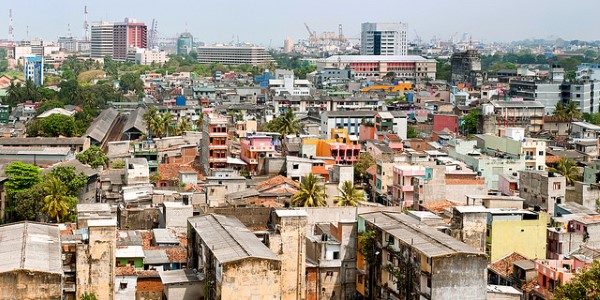Characteristics
Today, water stress is a major concern in many urban areas. The core aspect of urbanisation contributing to water stress is the rapid population growth together with inadequate planning, pollution, poverty, and competing demands on water resources. Cities import vast amounts of food and consumer goods from outside of their immediate area, and use large amounts of energy that is often produced elsewhere. Therefore, the increasing water demand due to urbanization will extend far beyond their borders. The direct water demand for use within cities will also increase and in developing countries, where the majority of urbanisation is occurring, the required water infrastructure for supply and treatment will take significant planning and financial resources. Additionally, climate change is expected to cause significant changes in precipitation patterns, which will affect the availability of water and induce water related disasters.
Current models of urban planning and water management have already failed or are likely to fail from the perspective of cost effectiveness, technical performance, social equity, and environmental sustainability. A system-wide paradigm shift is required. Integrated Urban Water Management (IUWM) planning provides a framework for interventions over the entire water cycle and a reconsideration of the way water is used (and reused). The IUWM approach is to balance competing demands among water users: agriculture; industry; household; and ecosystems. More governments are recognising the importance of adopting IUWM plans to address the challenges of cities, and there is growing consensuses around the principles of IUWM, which include the following:
- Involving key players – at the planning, decision-making, implementation, monitoring, and evaluation stages is critical to the success of the IUWM plan. Roles and responsibilities must be clearly stated in a legal framework so that stakeholder participation happens in a structured manner.
- Closing the “water loop” – that is, considering the entire water cycle as one, to the extent where the links between water sources, supply, wastewater, and storm water must be effectively understood and properly translated into actions. Bringing together the upstream and downstream relationships in the water cycle helps to provide a more holistic vision of urban water systems.
- Assessing a portfolio of water sources – means to look into options for water sources that are traditionally less visible or simply less thought of. This includes, for instance, ground water, rain water, storm water, black water (wastewater), and grey water (wastewater that is not sewage, such as sink water and dishwasher discharge).
- Waste as a resource – is to maximize the benefits from wastewater, which can be done by employing innovative technologies, so that water, energy, biogas, and nutrients can be actively reclaimed from wastewater. Recycling and reuse is central to improving the water efficiency in urban areas.
- Designing adaptive mechanisms – within the IUWM strategy enhances resilience against uncertainty and changing conditions that are imposed by environmental disasters and global warming. Special attention should be given to integrated flood management in IUWM plans.
- Urban water partnerships – can be established by involving academic institutions, media, and advocacy groups as well as industrialists and commercial actors. IUWM requires research and development for new water technologies just as much as it requires institutional actors to come on board and integrate principles of supply and demand efficiency in their daily usage of water.
- Low cost, high impact solutions – are needed, especially for urban areas of developing countries. The implementation of urban WASH programmes in places such as India, Kenya, and Uganda shows that water supply and sanitation services can be provided in affordable ways.
Urbanisation brings many challenges, but it also offers a wealth of opportunities for more efficient water management, as well as for the provision of drinking water supply and sanitation services to many people. IUWM plans are key enabling factors in making sure cities are indeed generators of wealth and employment, incubators of innovation and creativity, and provide the best opportunities to improve livelihoods, while maintaining an ecological balance. As cities do not exist in isolation but rather in connection to their hinterlands, IWRM plans must be coordinated with other resource management plans (e.g. basin, costal, regional, national, etc.).
Lessons Learned
There are several lessons to be learned from the cities that have effectively adopted IUWM plans:
- Closing the “water loop” is a backbone to the IUWM strategy. Waste water should be seen as a resource and efforts should be made so that water, energy, biogas and nutrients can be actively reclaimed from wastewater and thus reused.
- IUWM plans include assessing all sources of water, including for instance black and grey water.
- The integral management of the “water loop” is better achieved when one single water agency oversees it.
- Sustainable and efficient management of water depends on both increasing water supply and on restricting water demand.
- Public awareness campaigns are important for the population to adopt good water practices (Tools C8.01; C8.02).
- Integrate water in urban spaces so that people interact with water and see value in protecting this resource.
- Build partnership such that research and development of new water technologies can be favoured. This includes partnerships among the knowledge, technical, and commercial actors in the city.

